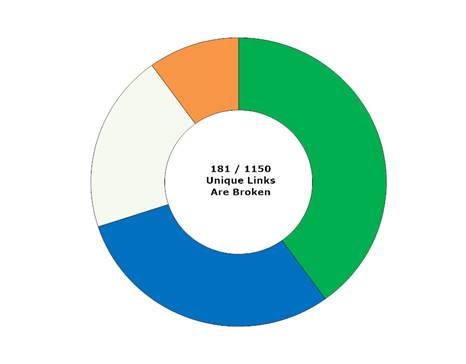The first three organic (unpaid) search results listed still get 80% or more of Google search engine traffic. That means Search Engine Optimization (SEO) is still important for the bed and breakfast business. It is as least as important as maintaining paid traffic sources such as online travel agencies (OTA’s) and bed and breakfast or lodging directories.
SEO improves your B&B Website so that search engines give your content precidence over competing Websites when guests search for lodging on the Internet. Today I’d like to talk about linking since it is becoming more important as a ranking signal to search engines. Search engines consider who you are linking from and linking to as an indication of what your site is about. Here are a few rules to help you create effective linking and better content.
Types of Links
First it is important to understand the 3 types of links:
“Internal” Links to other pages within your domain
“external” links to other domains such as attraction websites
“Inbound” links from other Websites to your domain
The following rules apply to Internal Links and Outbound Links. Look for a future post regarding Inbound Links.
Rule 1: Limit Links to 50 Per Page
Search engines reward interesting and relevant content. They penalize bad content. One type of bad content is a “link farm” or pages that consist mostly of links and have little relevant content. To avoid being mistaken for a link farm, as a simple rule we recommend keeping links to less than 50 per page. Doing that is harder than you might think. The typical B&B website design starts with about 25 links just for basic menu items like Directions, Policies, Rooms and Rates, and footer links like associations, reviews, etc. If you are using a flyout menu (dropdown links) with many branches, then the link count can quickly rise. It is important to hire a knowledgeable web designer who will consider the number of on-page links when designing your site.
Rule 2: Create Proper Anchor Text and Links
Anchor Text is the text that is highlighted in a hypertext link that can be clicked. Until recently, SEO experts were using common search terms or “Keywords” as the link text on their page. It would be common to see a blog post that had link text such as this:
…come to our wonderful B&B where there are things to see and do in xyz town. Visit our beautiful waterfalls and go kayaking in the xyz state park.
With the latest Google update, this keyword-based anchor text should be used sparingly and be inter-mixed with calls to action such as “click here” and brand text such as “xyz attraction”:
…come to our wonderful B&B where there are things to see and do in xyz town. Visit our beautiful waterfalls and go kayaking in the xyz state park.
Get Directions
The goal of the latest Google update is to encourage writing that sounds more natural. Many SEO experts believe that Google also considers the surrounding text when determining the quality of the link so the meaning of your page is also important.
Rule 3: Avoid Being “Spammy”
When you write for search, avoid over-using keywords as anchor text. It looks to a search engine like you are trying to use tricks to rank your page rather than writing good content. Use variations of the word to make text sound more natural. Too many words in anchor text can also look “Spammy”. Link text should be less than 7% of the page text.
Wrong Way:
Here are some of our areas best wineries:
ABC Winery, EFG Winery, HIJ Winery, KLM Winery and more.
This example shows the overuse of the word "winery" with no relevant content
Better Way:
Here are some of our areas best wineries:
ABC Winery: Description of 2 to 3 sentences. Use text variants such as winery, wine tour, wine tasting, vineyard.
EFG Vineyard: Description of 2 to 3 sentences. Use text variants such as winery, wine tour, wine tasting, vineyard.
HIJ Wine Tours: Description of 2 to 3 sentences. Use text variants such as winery, wine tour, wine tasting, vineyard.
KLM Wine and Brew Company: Description of 2 to 3 sentences. Use text variants such as winery, wine tour, wine tasting, vineyard.
This example illustrates using the businesses proper brand name, using word variations and limiting the number of links compared to text.
Rule 4: Open a New Window for Outbound Links
When you create an outbound link on a page, be sure to use the link command that opens a new window for the target website (target="_blank") and also leaves your site open. Otherwise, the target site will open in the current window and close your website. If that happens, the visitor will often get lost and will not return to your site. Use the following links structure to open the page in a new window.
<a href="http://www.otherdomain.com" target="_blank">
Rule 5: Fix Broken Links

Broken links are links that don’t lead anywhere because the link path is no longer valid. You might get a “page not found” error. Click to test all links and ensure they are not broken. When your site has broken links, it tells search engines that you are not maintaining it. High quality sites have good content and no broken links. Broken links count against you in search engine ranking.
I Hope this helps you to improve your B&B Website. Look for more valuable marketing information soon.
Cindy Bachmann
Innkeeper's Advantage
At Innkeeper’s Advantage we offer ongoing Search Engine Optimization as part of our technology suite for B&B’s. Do you want to get more “lookers” that become “bookers”? Click the button below and schedule a demo of Innkeeper’s Advantage to see how it can work for you!
